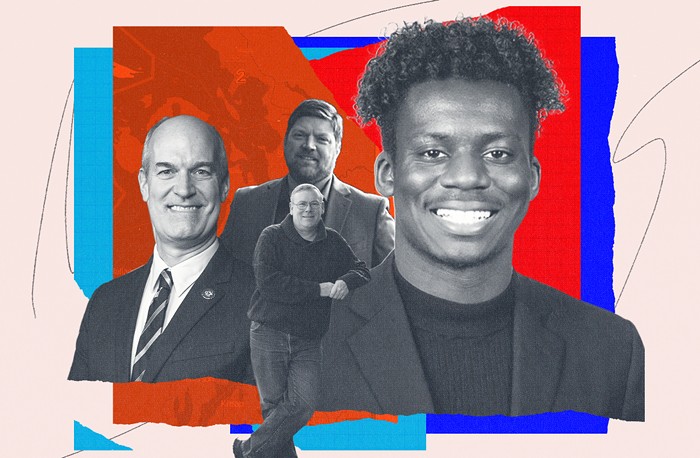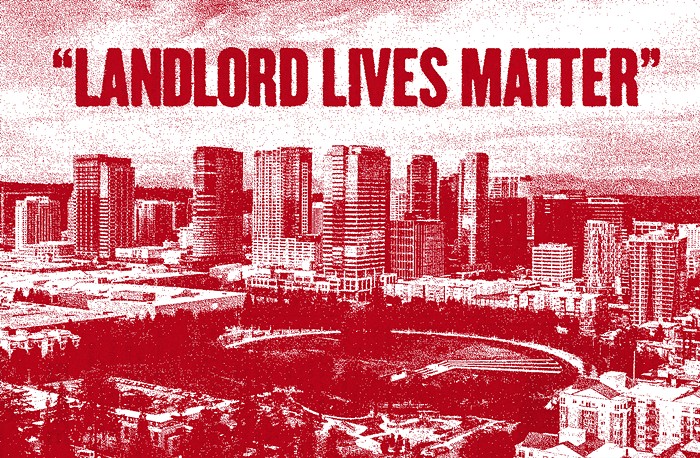After the 1964 report, all of that changed. There was no more denying smoking's deadliness, but as the news sunk in, about 20 years passed in which one could still argue with a straight face: Yeah, smoking is a harmful vice, but hey, it's a vice that doesn't hurt others. Then came the Surgeon General's 1986 conclusion that secondhand smoke causes cancer in nonsmokers, reduces lung function in young children, and poses a health problem that cannot be remedied simply by separating smokers from nonsmokers within the same airspace.
That left smoking with only one thing going for it: At least it's not addictive. Less than 10 years later, in 1994, when tobacco industry executives famously--and falsely--perpetuated this claim in front of Congress, a reasonable person could still profess to be confused about the addiction issue. But the next year documents emerged showing the tobacco industry had long known nicotine is addictive, and in 1999 tobacco executives, back in front of Congress, admitted the truth.
The industry and advocates of smokers' rights were now in a difficult position. They had to battle a spreading movement aiming to push cigarette smoke and its proven harmful effects out of more and more public spaces, but they were running out of arguments in favor of allowing people the unfettered right to smoke wherever they pleased. When California became, in 1998, the first state to ban smoking in bars, no one could argue that this ban was some hysterical reaction to unproven medical concerns; that argument had long since been lost. Instead, smoking advocates had to switch gears. Turning from health to economics, they argued that the movement to ban smoking in bars, and the companion movement to ban smoking in restaurants, would cause irreparable financial harm. There was talk of California bars being "raped," of a sales decline of 26 percent, of "definitive evidence" and "conclusive proof" that the smoking ban was an economic nightmare.
The argument should sound familiar. It's the same argument that's being used across the nation, and here in Washington, as the debate over whether to ban smoking in bars and restaurants continues to roll onward from California. The argument has popped up in New York, Connecticut, Maine, Delaware, and Massachusetts, the five states that have followed California's lead and adopted statewide bans on smoking in bars and restaurants; it has been bandied about in the Canadian cities of Vancouver and Victoria, which imposed their bans in 2000 and 1999, respectively; it has been made in the more than 70 American municipalities, such as El Paso, Texas, that have similar bans; and it has been floated in Pierce County, where a ban on smoking in bars and restaurants went into effect January 2, but because of continuing court battles has been an on-again, off-again measure (currently, it's off).
Last week, advocates of a statewide ban in Washington, who have been battling the economic argument as well, hit a setback when they failed to gather enough signatures to put the idea up for a vote in November, but they say they're not going to drop the issue. "This isn't going to go away," said Scott Peterson, spokesperson for Breathe Easy Washington, the group that was running the initiative campaign. "It's just a matter of time. Whether it happens this year or next year, [a ban] will happen within the next few years."
Which means, of course, that the economic argument will also be back, making it worth asking: Is it true? Does banning smoking in bars, clubs, and restaurants hurt business?
- - - - - - - -
When I ask Stanton A. Glantz, a professor of medicine at the University of California, San Francisco who has studied the economic impact of smoking bans in California and elsewhere, to tell me what he makes of the argument that smoking bans hurt business at bars and restaurants, he says, "There's a technical term for that: Bullshit."
In New York City, which enacted its ban in March 2003, receipts at restaurants and bars are up by 8.7 percent one year later, and employment at those businesses is up by 10,600 jobs, according to a study conducted by the city. In Victoria, where opponents of the 1999 ban claimed a devastating $6 million loss to bars and restaurants, a study commissioned by the Vancouver Island Health Authority found that this loss did not, in fact, take place. In El Paso, which enacted its ban in 2002, a study by the Centers for Disease Control and Prevention found no negative economic impact.
"This is something that has been studied over and over and over again," Glantz says, his voice rising with exasperation at the fact that people are still calling to ask him whether the economic harm argument is true. "There have been more than 100 places studied. And it has simply never materialized. The only so-called studies that conclude there is an effect are things that the tobacco industry has funded either directly or indirectly."
Glantz teaches statistics and has a PhD minor in economics, so he's no dummy when it comes to crunching numbers and processing economic indicators. A study his Institute for Health Policy conducted the Glantz way--which involves actual receipts, dummy variables, and a "multiple linear regression analysis"--found that the 1998 smoking ban in California had no negative effect on bars and restaurants and in many cases those businesses actually did better after the ban.
Glantz says tobacco-funded studies are generally shoddy and are frequently conducted through front-groups that organize themselves as "restaurant associations." One example: In New York, a study released last month by the Empire State Restaurant and Tavern Association found that 2,000 jobs had been lost as a result of New York's statewide smoking ban. But that figure was derived from "projections," not actual employment data. And the association is connected to the Tobacco Institute, which represents major American cigarette companies. Glantz says studies by these types of groups tend to take the fortunes of individual establishments out of context, fail to look at long-term trends, and sometimes rely simply on people's opinions of whether business is going to go down (AKA "projections") rather than on actual receipts.
Another example: In Pierce County, the Entertainment Industry Coalition, which represents businesses opposed to the smoking ban there, has repeatedly claimed economic harm to local bars and restaurants. Linda Matson, the Entertainment Industry Coalition's executive director, told the Tacoma News Tribune last month that a survey by her group showed more than 400 hospitality industry jobs lost and 20 businesses closed as a result of the ban--though, as the paper also noted, "she could not immediately provide the survey." A study by the Tacoma-Pierce County Board of Health shows the opposite of what Matson claims: Food-service and drinking-establishment employment is up this year while business closures are down.
Worth noting as one considers what to make of this discrepancy: Matson's group received a reported $2,500 from a parent company of Philip Morris in 2003, and Matson's name turns up in the Legacy Library, an online compendium of tobacco-company documents released in various lawsuits. The documents show a Linda Matson in Washington was retained as a consultant by Philip Morris in 1999, and has been involved with the Washington State Association of Tobacco & Candy Distributors. Matson did not return repeated calls requesting comment.
The Pierce County discrepancy highlights what could be seen as an extremely annoying situation in which dueling studies funded by opposing interests (health interests on the one hand, tobacco interests on the other) keep reaching opposite conclusions, making it difficult for the non-economist to sort out who's right--but Glantz slaps down this take. The studies finding no economic impact are done properly, he says, and the proof is that many have been published in peer-reviewed journals, which require uninterested parties to review studies for accuracy and methodology before they are published.
It's possible to believe, as some do, that a vast conspiracy of anti-smoking interests is simply cooking the books in order to produce all these studies showing no harm from smoking bans, but to believe this one has to believe that the CDC, some of the world's major peer-review journals, and local public health departments all around the country have their facts wrong or are lying. One also has to believe that, despite its long track record, the tobacco industry is now telling the truth.
Glantz considers the question of whether smoking bans harm bars and restaurants to be such a settled matter that he doesn't bother doing studies anymore. "How many times do we have to prove that the world is not flat before people stop saying, 'Well, the world wasn't flat in California but maybe it will be flat in Seattle.'"
- - - - - - - -
I'm no expert in economics or statistics, but I do know how to sit at a bar, so I figured I would double-check Glantz's assertions and go to two cities on the West Coast that are way ahead of Washington State when it comes to anti-smoking regulation, just to get an unscientific sense of whether establishments there seem to be suffering.
In San Francisco, I went to Red's Corner, a bar near the Tenderloin, and had a drink with Josh Alpert, program manager for Americans for Nonsmokers' Rights, a group that helped push the smoking ban through in California. Alpert is a stout man with reddish-brown hair who speaks with the clarity of a lobbyist--which, in fact, he used to be.
It was early afternoon when we met at Red's, so only hardcore regulars were in the bar with us, but as the afternoon wore on, traffic picked up. Probably the only new development at Red's since the smoking ban is that its huge windows now look out not only onto Ellis Street but also onto smokers who have to step outside for their fix. Coming from Seattle, it's always a bit jarring to walk into a bar where smoking is not allowed. You're instantly aware that something is missing, but it takes a few moments to realize that you don't really miss what's missing--that gray haze and nicotine scent that practically defines the word "bar" in Seattle.
Alpert is telling me that the movement to ban smoking in bars and restaurants is "not a movement about targeting smokers, it's about finding ways so that smoking doesn't harm others." It's a smart pitch, designed to appeal to people's altruism rather than put smokers on the defensive, and in this vein, the smoking ban in San Francisco, as in Washington and elsewhere, has been pitched as a worker-protection measure. "You shouldn't have to be exposed to a known carcinogen in your workplace," he says.
Both sides try to appeal to the sympathy and affection we all feel for our bartenders and servers. The anti-smoking side says that by allowing smoking in bars and restaurants--while banning it in almost all other workplaces--we are blithely allowing bartenders and servers to suffer the health consequences of sucking in massive amounts of secondhand smoke. The pro-smoking side says--disingenuously, Glantz and Alpert would argue--that by banning smoking you are likely to make bartenders and servers lose their jobs.
Dueling appeals to altruism aside, it turns out that if you ask the bartenders in California, they like the ban. Polls have found they prefer working in smoke-free environments and a study of bartenders published in the Journal of the American Medical Association showed the health of bartenders improved once bars went smoke-free. Lita Marquez, a smoker and a bartender at Red's Corner, confirms these findings, telling me, "I'm happy that people are not smoking here. Before, when I left the place, I was a walking ashtray. It was just horrible, I felt terrible."
A little while later I go to the Detour, a gay bar in the Castro, where Damon Reiter, 30, a tall and bouncy bartender wearing a belt buckle shaped like a pistol, tells me the same thing. "We wouldn't be having this conversation right now if smoking was allowed in bars," he says.
He loves telling people from out of town that they can't smoke inside. "I say, 'Go outside! Smoke your cancer stick outside!' It's fabulous." And exiling smokers to the curb doesn't seem to be hurting business any--it's about 7:00 p.m. on a Wednesday and the bar is already full.
Out on the sidewalk a smoking patron is taking a cigarette break. A tipsy Robert Stiles, 33, tells me, "Write this down: I smoked my first cigarette during a Quiet Riot video on MTV." About the ban, he tells me, in a lilting voice that evokes the cartoon character Snagglepuss: "It sucks, but it's fine. I really don't like to smoke inside anyway 'cause it's nasty and it kills you--and I don't want to kill anyone else." Score one for Josh Alpert and his rhetoric of not harming others.
Around this time, a cute boy wearing purple glasses comes by and asks Stiles for a light. Stiles holds his lighter up to the end of the boy's cigarette, and the two of them cup their hands into a wind screen, sharing eye contact, a touch of fingers, and the thrill of the banned, the illicit, the patently sexual.
"You should smoke more, it's good," Stiles says to me afterward, and for a moment I can see what he means. He doesn't mean I should really start inhaling, on a regular basis, the 6,800 chemical compounds that make up cigarette smoke, compounds that damage every organ in the body and cause everything from heart disease to low birth weight to cancer of the esophagus, lung, larynx, mouth, and bladder. What Stiles is talking about is the social connection smoking offers, that addict-outsider-nihilist-hedonist-exile bond that forms between those who now have to light up in the legally and culturally imposed diaspora of smoking sections and curb cuts and porches, a bond that, I have to admit, has always made me a bit jealous. Though, I should say as well: I've never been jealous enough of the bond that experiencing it seemed worth giving myself an abdominal aortic aneurysm, acute myeloid leukemia, cataracts, cervical cancer, kidney cancer, pancreatic cancer, periodontitis, or stomach cancer, which happen to be among the new diseases linked to cigarette smoke by this year's Surgeon General's report on smoking.
When I got up to Vancouver, I met another smoker exiled to the sidewalk. Frank McDonald, a sturdy construction worker standing along the seedy part of Granville Street, tells me: "I don't mind it... Second-hand smoke affects the nonsmoker. They have rights, too." Again, the don't harm others argument wins.
At the Royal, a bar down the street from where McDonald is standing, bartender Alex Greer, 28, tells me business hasn't suffered since the ban and that he likes it, even though he's a smoker himself. The same argument that was made in San Francisco about the health of bartenders was made here, Greer tells me, and though the ban caused a lot of grumbling at first, people have accepted it.
"It's just like anything, it's a kind of big shock. Eventually you accept it. And there is a good reason behind it... everybody knows how unhealthy smoking is."
It may seem a bit unrelated, but Greer's statement reminds me of Morocco, where I studied while I was in college. It was 1997, and I was living in a neighborhood in the capital of Rabat where the government had launched a campaign to get people in the rapidly urbanizing country to start throwing their garbage into indoor trash cans that would then be taken to the curb every so often for pick-ups (a new phenomenon there) rather than tossing their trash over courtyard walls and into the street (the old way of taking out the trash). This was a shock, too. But there were good health reasons for it, and by the next generation, it's going to be hard to find someone in urban Morocco who even remembers a time when trash was thrown over walls rather than into cans, much less anyone whose nostalgia for this trash-strewn past makes it seem worth resurrecting. The same thing is happening with spitting in China, and happened with seatbelts not too long ago in this country. Likewise, one expects, with smoking in bars.
- - - - - - - -
There are sentimental and philosophical arguments to be made for smoking, or at least for greater ambivalence about all the efforts to push it into the margins. The writer Jonathan Franzen made a few of them in his 1996 essay, "Sifting the Ashes," including one praising certain aspects of nicotine addiction:
"To take control of their lives, people tell themselves stories about the person they want to be. It's the special privilege of the smoker, who at times feels so strongly the resolve to quit that it's as if he'd quit already, to be given irrefutable evidence that these stories aren't necessarily true: Here are the butts in the ashtray, here is the smell in the hair. As a smoker, then, I've come to distrust not only my stories about myself but all narratives that pretend to unambiguous moral significance."
It's an interesting argument, but it's worth noting that this type of argument is what we're left with after all the others have been discredited. Now we have only: At least smoking teaches people something about ambiguity. And working against this are the unambiguous health results of marginalizing smoking, such as those in Helena, Montana. After that city banned indoor smoking in 2002, Helena's only hospital recorded a 40 percent drop in heart attacks. When a court ordered the ban halted a year later, the heart attack rate shot right back up. The findings, published in the British Medical Journal, were so compelling they prompted the CDC to warn people at risk of heart disease to stay away from secondhand smoke entirely.
There are also the unambiguous results showing that more people quit smoking as it is banned in more places and as taxes on cigarettes are increased. In New York City, which has done just that, between 2002 and 2003 the number of adult smokers fell by 11 percent--a drop that represented 100,000 fewer smokers and also represented the steepest short-term decline in smoking ever recorded.
Tobacco use, according to the Surgeon General, is the number one preventable cause of disease in the U.S., leading to about 440,000 deaths every year and costing about $157 billion each year in health-related economic losses. Despite everything that has happened since the Surgeon General's first report in 1964, some 46 million American adults smoked cigarettes in the U.S. in 2001. Seventy percent of them wanted to quit, much like Jose Velez, 57, who on a recent evening was sitting with a bottle of Bud in one hand and a cigarette in the other at the Nitelite, a bar in Belltown.
Velez must like the Nitelite the way it is--smoky--as comes here every day. But he says he would actually like to see a smoking ban because he figures it might help him quit. And he says a ban wouldn't keep him away from the bar. "I would just go outside," he says. A man seated next to him, tending to a Rolling Rock and a Camel, agrees. "I'm for it," says Dan Ogden, 46. "If I had to go outside I would."
The bartender, Sherry Nelson, 36, sees what's coming: With other states doing it and even patrons of this smoke-filled bar saying they wouldn't mind it, a Washington smoking ban that extends to bars can't be far off. Nelson, a cheery woman a pack-a-day habit, makes the workers' health argument: "It's a work hazard, really," she says. "Every bartender I know over the age of 50 has emphysema or breathing problems." And as for the idea that business will suffer, Nelson is dismissive. "Not if everybody does it," she says. "Not if it's a statewide thing."



















